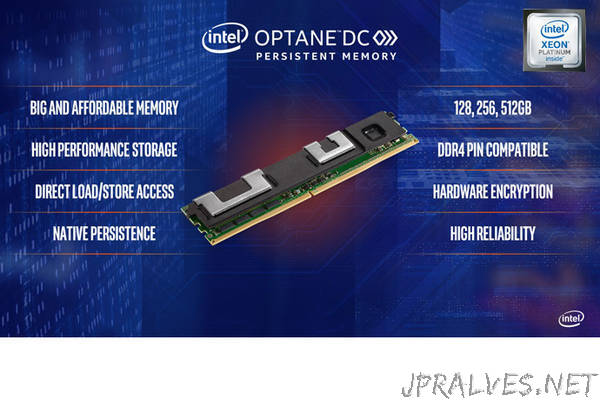
“Intel today launched its beta program for Intel® Optane™ DC persistent memory. This program allows leading original equipment manufacturers (OEMs) and cloud service providers (CSPs) to offer their customers early access to Intel’s revolutionary memory technology and paves the way for general availability in the first half of 2019. As part of today’s news, the world’s leading OEMs and CSPs have announced beta services and systems for early customer trials and deployments.
“Intel Optane DC persistent memory is a groundbreaking technology that helps address real problems our customers face. In the data-centric era, businesses need to move data faster, store more of it and process everything. Delivered with next-generation Intel® Xeon® Scalable processors, this technology will transform critical data workloads, from cloud, databases and high-performance computing to in-memory analytics and content delivery networks.”
–Lisa Spelman, Intel vice president and general manager, Intel Xeon Products and Data Center Marketing
How It’s Different: As a part of today’s news, Intel announced unique capabilities delivered by Intel Optane DC persistent memory through two special operating modes – App Direct mode and Memory mode. Applications that have been specifically tuned can take advantage of App Direct mode to receive the full value of the product’s native persistence and larger capacity. In Memory mode, applications running in a supported operating system or virtual environment can use the product as volatile memory, taking advantage of the additional system capacity made possible from module sizes up to 512 GB without needing to rewrite software.
Why It’s Important: Intel Optane DC persistent memory represents a new class of memory architected to extract further value from data. Unlike traditional DRAM, Intel Optane DC persistent memory will offer the unprecedented combination of high-capacity, affordability and persistence. Systems and services deploying this new memory technology will deliver new advancements for a wide range of data center use cases, including improved analytics, database and in-memory database, artificial intelligence, high-capacity virtual machines and containers, and content delivery networks. The technology fundamentally changes data center resiliency, taking in-memory database restart times from days or hours down to minutes or seconds, and delivering an affordable memory footprint to scale system memory capacity to unprecedented levels.
Who Is Adopting It: OEMs and CSPs who have announced beta services and systems for early customer trials and deployments include Alibaba, Cisco, Dell EMC, Fujitsu, Google Cloud, Hewlett Packard Enterprise, Huawei, Lenovo, Oracle and Tencent. Intel is also working with leading independent software vendors (ISVs) to ensure applications and operating environments take full advantage of the technology. These ISVs include Aerospike, Altibase, Apache Spark, AsiaInfo, Cassandra, DataBricks, Gigaspaces, IBM, Microsoft, Red Hat, RedisLabs, RocksDB, SAS, SAP, Sunjesoft, SUSE, Ubuntu, Virtuozzo and VMWare*.”
